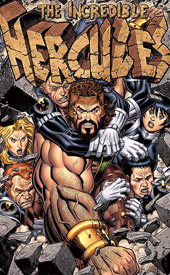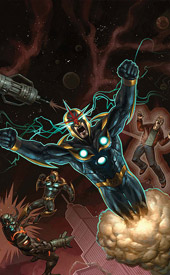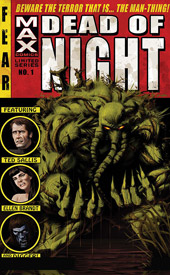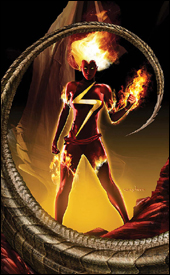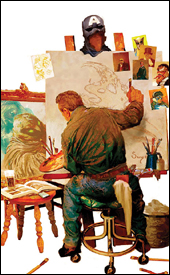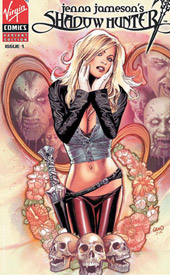
Right from the opening page, Mukesh Singh’s artwork steals the show. It’s gorgeous, both in composition and in execution, and that’s doubly impressive considering he evidently handled all facets of the book’s visuals – pencils, inks and colors. His layouts are strikingly beautiful, a great blend of darks and lights, and he clearly knows how to maximize the impact of that kind of a style. It’s become too much of a gimmick for an artist to randomly slap a panel up against a plain white background, but Singh shows that when it’s properly amplified, that treatment can still make an impact. He loses himself in the details of his backdrops, but allows the characters to stand their ground with a minimal amount of detail. And, when he’s really allowed to cut loose with some darker, more disturbing imagery, he leaves nothing to the imagination. He’s at his best when he’s working with a vivid splash page or a sudden, jarring action scene, and this first issue gives him plenty of opportunities to flex both of those muscles.
Singh occasionally runs into some problems with the facial expressions of the central character, who’s named Jezzerie Jaden, but is very obviously modeled after Jameson herself. I think she’s meant to carry a sort of dreamy, introspective appearance, but she generally just seems confused and ditzy. That’s not a good match for the wordy internal dialogs that accompany these sketches, but I guess you can only apply so much artistic license to a real-world subject that leaves something to be desired.
The storyline, concocted by Christina Z and Jameson herself, is a bit self-obsessed. It’s all about a buxom blonde heroine (the aforementioned Jenna look-alike) who’s dealt her entire life with ethereal visions of an invisible battle between good and evil. When she finally seeks professional help in adulthood, the experience only serves to make the visions even more vivid and dark-hinted. Jaden is a shallow character, one who I’m not really all that interested in learning much more about, but she’s the only face who’s given more than a page or two to define herself in this first issue, so I guess I don’t really have a choice.
So much of the story occurs through internal monologues and hallucinations that it becomes more of an abstract exercise in metaphor than a real sequence of events. Jezzerie’s thoughts are so disorganized that it’s like taking a long walk in the shoes of somebody with a bad case of ADD. One minute, she’s thinking about the dark, stringy, shadowy cratures who just attacked her in broad daylight, the next she’s talking to herself about how she still doesn’t know if she prefers men or women. That’s… not really appropriate here, but… OK, thanks for sharing, I guess.
At the end of the day, this is a meddling storyline set against an absolutely breathtaking backdrop. The writing seems to be so focused on guaranteeing the reader as to its authenticity that it doesn’t make a lot of forward progress, and I really didn’t give a crap about any of the characters, least of all the protagonist. The only redeeming factor of this book is Mukesh Singh’s artwork, and that alone makes it worth flipping through. It really is fantastic, and if he could do this much to make a bad story sing, I can’t wait to see how he reacts to something that’s genuinely worthwhile.
Overall Score: 3.5
